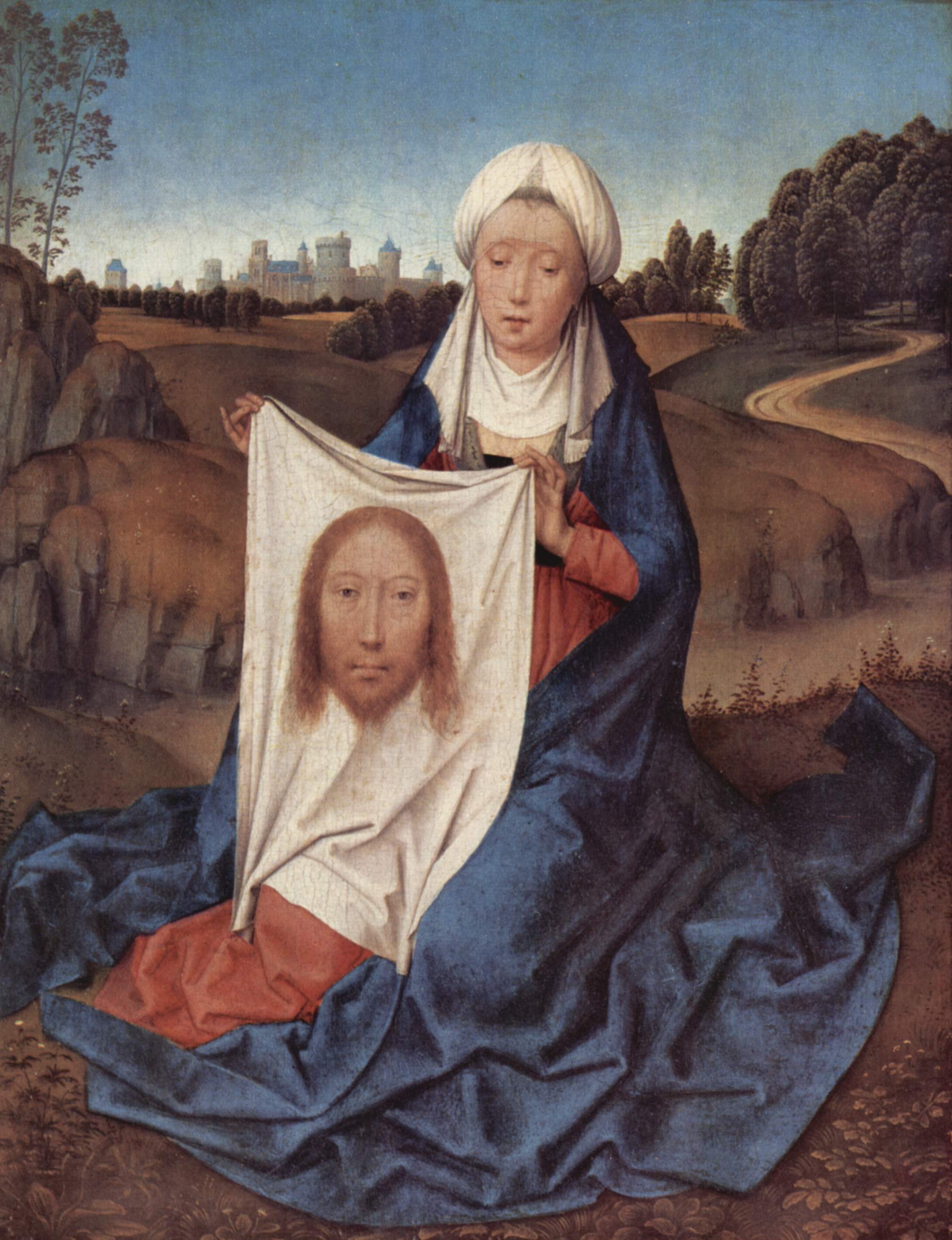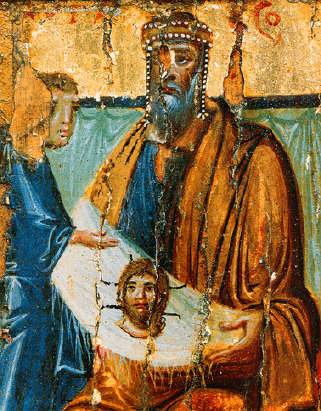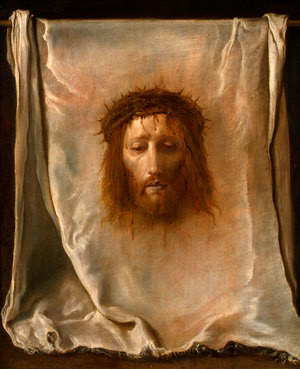 |
|
Diptych with Saint John the Baptist and St. Veronica, right panel, by Hans Memling, c. 1470.
|
Nothing divides the Christian world faster than the subject of idols. Protestants generally follow Clement of Alexandria, who wrote, “For we are not to delineate the faces of idols, we who are prohibited to cleave to them; nor a sword, nor a bow, following as we do, peace; nor drinking-cups, being temperate.”
Catholic and Orthodox believers generally follow St. Basil the Great, who asked, “If I point to a statue of Caesar and ask you ‘Who is that?’ your answer would properly be, ‘It is Caesar.’ When you say such you do not mean that the stone itself is Caesar, but rather, the name and honor you ascribe to the statue passes over to the original, the archetype, Caesar himself.”
Icon-painters follow a very strict (and relatively modern) protocol, but there is a small class of them for which no human agency is claimed: the Acheiropoieta, or “Icons Made Without Hands.” These are always images of either the Virgin Mary or Jesus. They are said to have come into existence miraculously or during the life of Christ.
There are more of these than you might suppose. In Orthodoxy, the most famous are the Image of Edessa and the Hodegetria. In Catholicism, they include the Shroud of Turin and the Virgin of Guadalupe, which sprang into existence in 1531 in Mexico.
Among these should be counted a relic that went missing in the 17th century. In its day, it was one of the most famous wonders of the Christian world, a symbol for the Corporal Works of Mercy. This is the Veronica, a strip of linen veil on which a compassionate bystander wiped Jesus’ face on his way to the Cross.
 |
|
King Abgar receiving the Image of Edessa. 10th century icon at St Catherine’s monastery, Mount Sinai.
|
The name Veronica is a conflation of Latin vera (true) and icon (image). It originally referred to the veil itself, but over time was applied to the nameless woman who held it. Veronica became closely identified with the Via Dolorosa and Stations of the Cross, but she is an early-Medieval invention. By the end of the 12th century, pilgrims were recording visits to the veil in Rome. By 1300, the Veronica was one of the Mirabilia Urbis, or wonders of the city, which pilgrims were expected to visit. It had its own chapel in Old St. Peter’s Basilica.
 |
|
The Veil of Veronica, by Domenico Fetti, c. 1620
|
As with all icons, the Veronica was extensively copied by free-lancers, until the 17th century when the Church threatened copyists with excommunication and put the Veronica away for safe-keeping. Where it ended up is a mystery. There’s a relic case in the Vatican (and some others scattered throughout Europe) but nobody has seen the actual veil in a few hundred years.
Let me know if you’re interested in painting with me in Maine in 2014 or Rochester at any time. Click here for more information on my Maine workshops!
